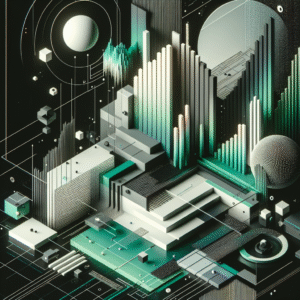Web3 Social Networks: Transforming the Internet Experience in 2025
- User empowerment through decentralized models
- Enhanced privacy and data control for users
- New business opportunities driven by token economies
- Future trends including AI integration and interoperability
- Steps for getting started with decentralized networks
- What Are Web3 Social Networks?
- Key Features of Decentralized Social Media
- How Decentralized Social Media Works
- Privacy in Web3 Social Networks
- The Business Case for Web3 Social Platforms
- Future Trends in Web3 Social Networking
- Getting Started with Decentralized Networks in 2025
- Conclusion
What Are Web3 Social Networks?
Web3 social networks represent the next evolutionary phase in online connectivity, leveraging blockchain technology to create environments where users maintain control over their data. Unlike their predecessors, these networks eliminate intermediaries, allowing for peer-to-peer interactions. Key examples of decentralized social platforms include Mastodon, Diaspora, and Aether.
Research by CoinTelegraph emphasizes that “the shift to Web3 is not just about using blockchain; it’s about creating environments where user agency is prioritized” (source: CoinTelegraph).
Key Features of Decentralized Social Media
Decentralized social media comes with several compelling features:
- User-Controlled Data: Users own their data, which is not monetized by centralized platforms.
- Censorship Resistance: The community or algorithms do not impose restrictions on the content shared.
- Token-based Economy: Users can earn rewards and contribute to the network’s health.
These features play a significant role in attracting users who are increasingly aware of data privacy concerns.
How Decentralized Social Media Works
Decentralized social networks utilize blockchain technology, which ensures that data is stored on a distributed network instead of a central server. Each transaction or piece of information is recorded in blocks that form a chain.
For instance, when a user posts content, it is included in the blockchain, ensuring it cannot be altered or deleted by any single entity. The underlying technology also allows for better security, user authentication, and seamless peer-to-peer exchanges.
Familiarizing yourself with Web3.js will help developers understand the entire ecosystem of decentralized applications (dApps). Explore more with our post on Understanding Web3.js and Its Impact in 2025.
Privacy in Web3 Social Networks
In a Web3 social platform, users are truly in control of their privacy. With traditional networks facing scrutiny for mishandling user data, decentralized platforms provide mechanisms for secure data sharing. Users can choose what to share, and with whom, without fear of exploitation.
Research from Forbes highlights that “Web3 can potentially lead to the rebirth of trust in online interactions” (source: Forbes).
Moreover, cryptographic methods ensure that even if data is intercepted, it remains unreadable to unauthorized parties.
The Business Case for Web3 Social Platforms
Businesses stand to gain significantly from adopting Web3 social networks. The benefits include:
- Cost Efficiency: Reducing reliance on traditional advertising by engaging directly with users.
- Enhanced Customer Engagement: Building communities around shared interests and values that drive engagement.
- New Revenue Models: Leveraging token economies and NFTs for monetization.
As more companies explore these avenues, the potential for innovation is tremendous. Consider hosting your landing page on an optimized, user-friendly platform like Hostinger to capitalize on these trends.
Future Trends in Web3 Social Networking
Looking ahead, we can expect to see several significant trends affecting Web3 social networks:
- Increased Adoption: As user awareness grows, more people will gravitate toward decentralized platforms.
- Integration of AI: Personalization and user experience in Web3 can greatly benefit from AI-driven analytics.
- Interoperability: Future platforms will likely allow for cross-platform interactions, making user experiences even richer.
Getting Started with Decentralized Networks in 2025
For professionals and businesses looking to leverage Web3 social networking, the following steps are crucial:
- Educate Yourself: Familiarize yourself with blockchain technology and its applications in social media.
- Choose the Right Platform: Investigate various Web3 social platforms to find one that aligns with your brand.
- Develop Community Guidelines: Ensure that user interaction remains meaningful and respectful.
Our previous article on Top Web3 Companies Innovating in 2025 provides insights into the most impactful players in the space and can guide your decisions.
Conclusion
Web3 social networks are not just a trend; they represent a fundamental shift in how we interact online. By embracing decentralized social media, we can reclaim our privacy and foster a more inclusive community. As we navigate 2025, businesses and technology professionals must adapt to these changes to remain relevant in the evolving digital landscape.
For more insights, check out our posts on Understanding Web3.js and Its Impact in 2025 and Top Web3 Companies Innovating in 2025.





Pingback: Discover Top Social Media Tools for 2025 - IT LearningHub
Pingback: Guidelines for Setting Up Multi-Cloud Architectures - IT LearningHub
Pingback: Understanding IoT Security Challenges Ahead - IT LearningHub